Wondermondo 🢖 World 🢖 Wonders of Europe 🢖 Wonders of Croatia
Territory
Wonders of Croatia
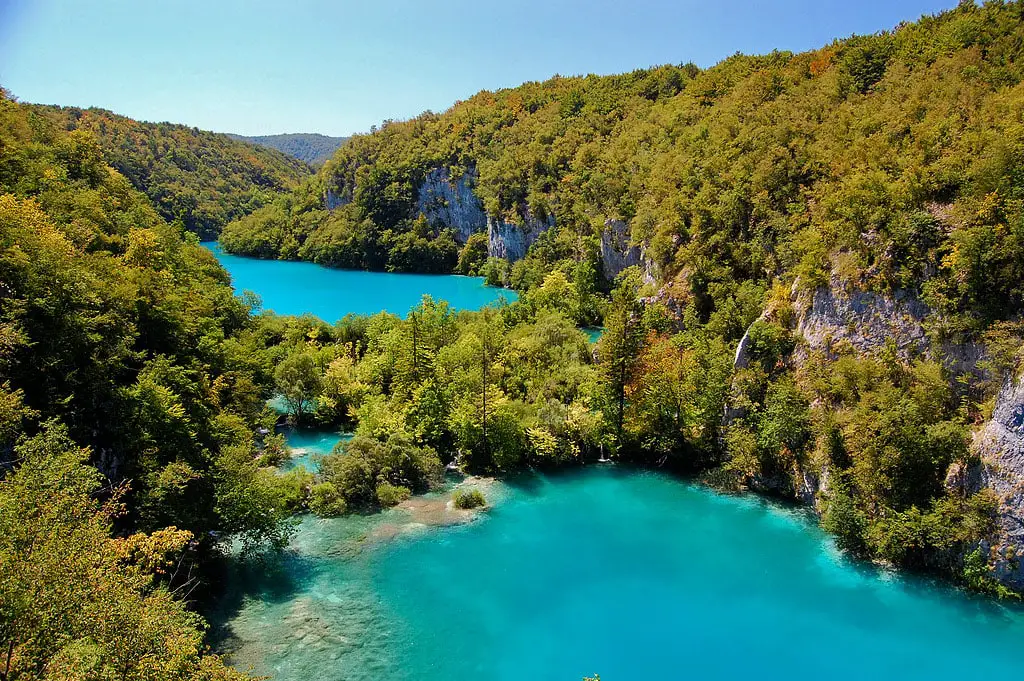
 Highlights
Highlights
The natural and cultural heritage of Croatia is diverse and very charming.
The most amazing wonders of Croatia are:
- The ancient, beautiful Dalmatian seaside cities and towns;
- The diverse karst formations – waterfalls with tufa formations, sinkholes, caves, springs, canyons.
Map with the described wonders
If you see this after your page is loaded completely, leafletJS files are missing.
 Top 25 wonders of Croatia
Top 25 wonders of Croatia
Geological wonders
Plitvice Lakes
Lika-Senj
A unique, picturesque group of some 20 blue-green lakes arranged in a chain over the distance of 8 km, divided by natural dams of tufa. The tufa formation process is active, it forms by joint geological and biological processes. The stream between the lakes has multiple waterfalls, some up to 80 m tall.
Crveno Jezero (Red Lake)
Split-Dalmatia
One of the most impressive sinkholes in the world: a deep shaft with a lake at the bottom. The total depth of the sinkhole is some 530 m, it contains a 280 – 290 m deep lake with endemic fish.
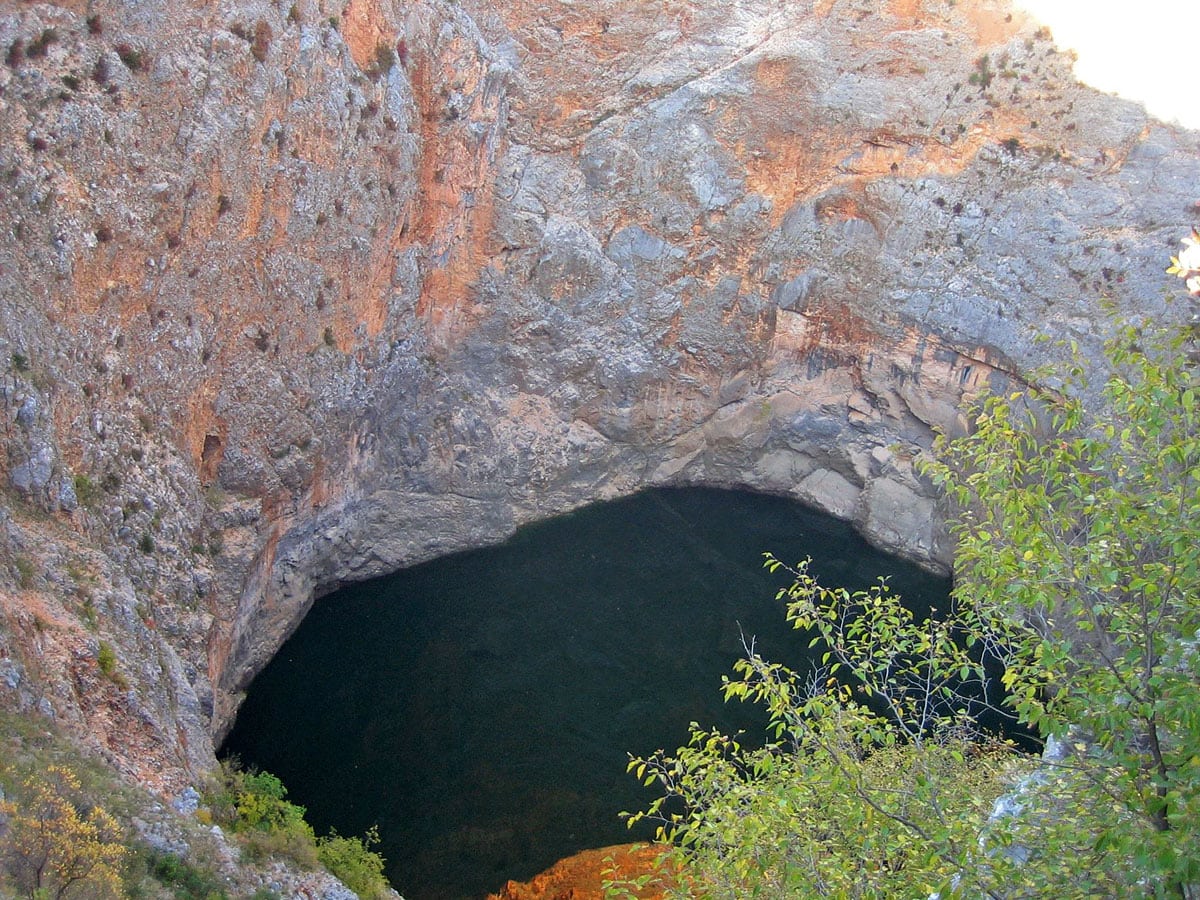
Skradinski Buk
Šibenik-Knin
Group of impressive waterfalls over tufa dams. Over 400 m in length there are 17 waterfalls, height difference of 47.7 m.
Modro Jezero – Blue Lake
Split-Dalmatia
A giant collapse structure – sinkhole. Its depth is 290 m. At the bottom for the most part of the year is seen deep blue lake – a popular swimming place.
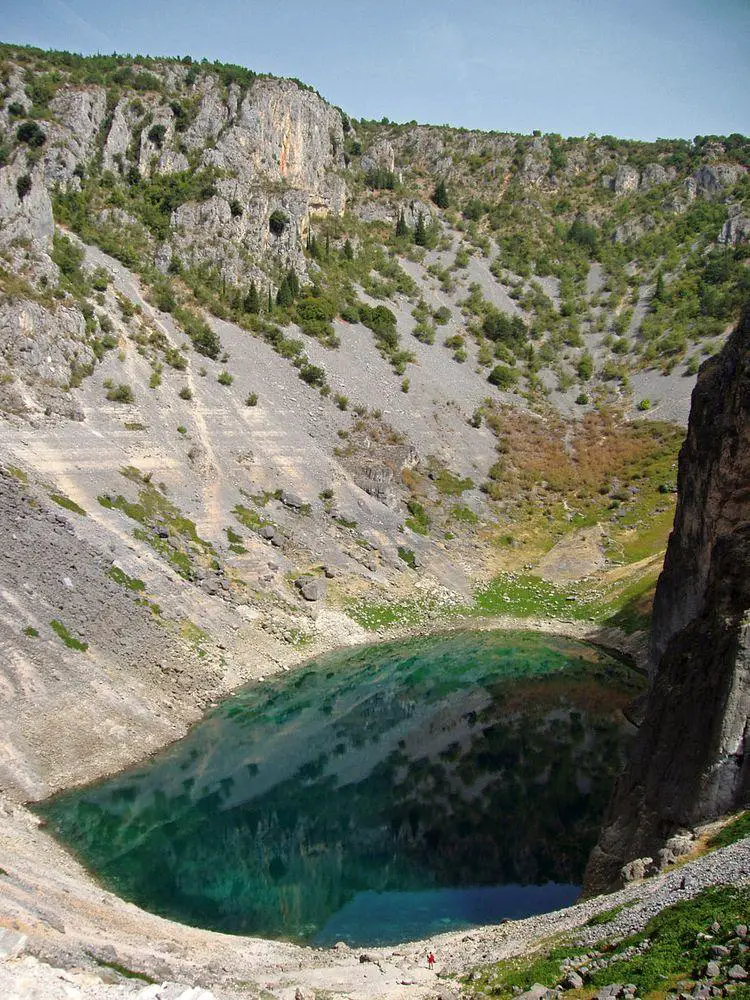
/ Wikimedia Commons, user Dreizung, CC BY-SA 3.0
Biological wonders
Vindija Cave
Varaždin
Cave with an impressive, enormous entrance. Contains some of the best-preserved remnants of a Neanderthal man who lived here 30,000 years ago. Remnants of Neanderthal from this cave were used in the Neanderthal genome project.
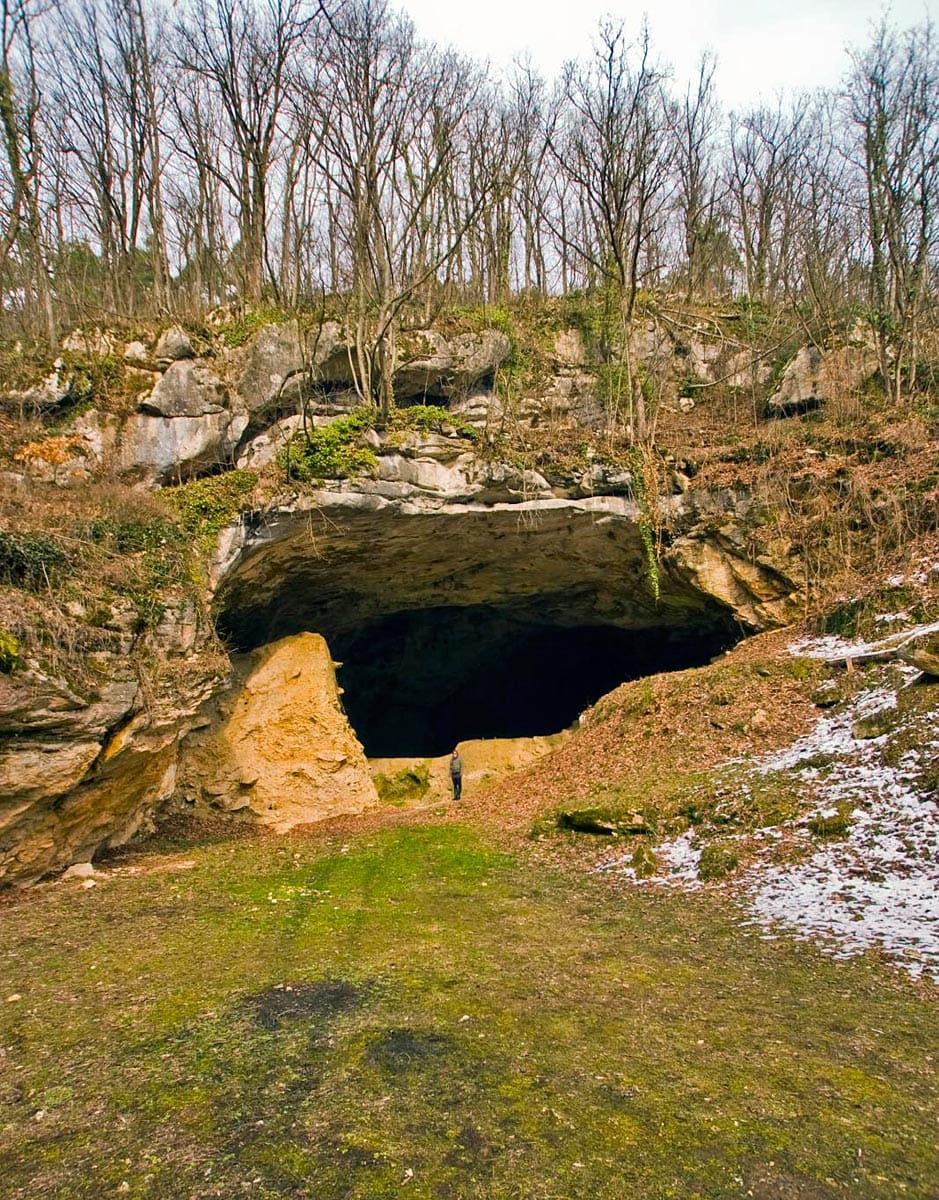
Archaeological wonders
Pula Arena
Istria
One of the six largest surviving Roman amphitheaters in the world, exceptionally well preserved and located in a beautiful setting with the sea in the background. Built in 27 – 68 AD.
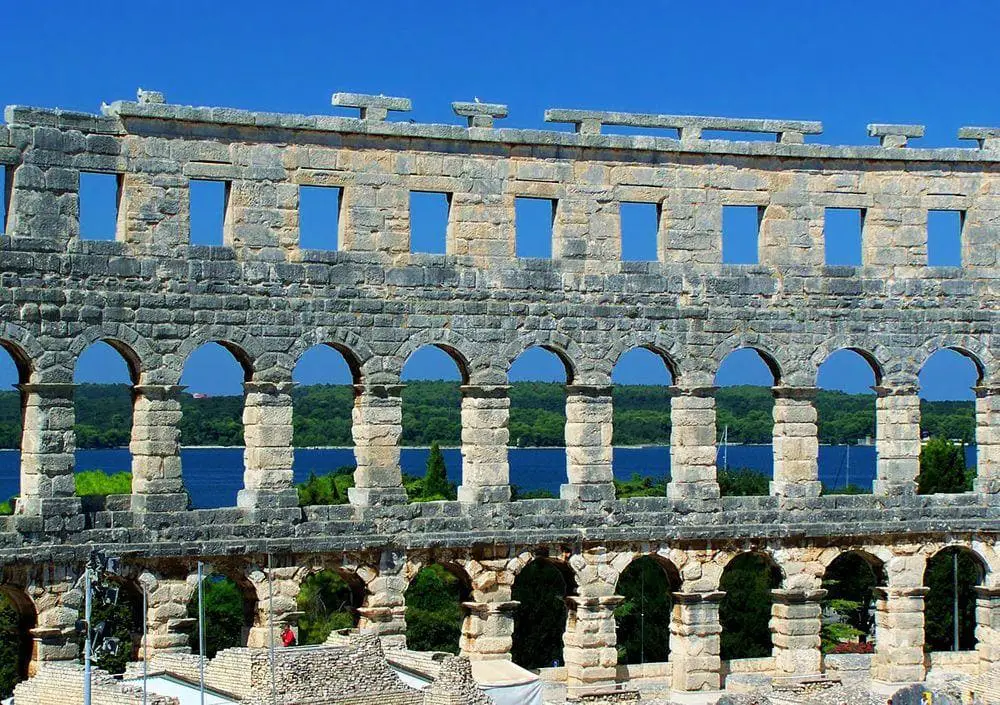
Architecture wonders
The walled city of Dubrovnik
Dubrovnik-Neretva
One of the most outstanding and beautiful medieval cities worldwide. This Dalmatian city is at least 1,300 years old and developed as an important center of international trade. The walled city from three sides is surrounded by sea and is densely built up with numerous historical buildings such as Gothic-Renaissance Sponza Palace, Rectors Palace, the small Renaissance St.Saviours church, and many other valuable buildings. The 2 km long fortification walls around the city have been well preserved.
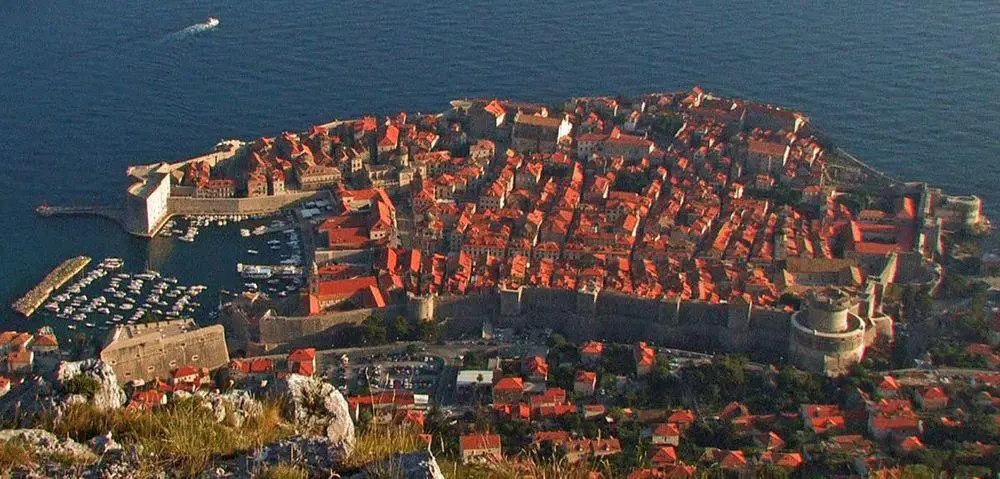
Euphrasian Basilica in Poreč
Istria
The best-preserved early Christian cathedral complex in the world, a unique example of church architecture from the 5th – 6th century AD. Here have been preserved all the buildings of the cathedral complex since these ancient times. Especially valuable are mosaics from the 5th century AD. The bell tower was built in the 16th century AD.
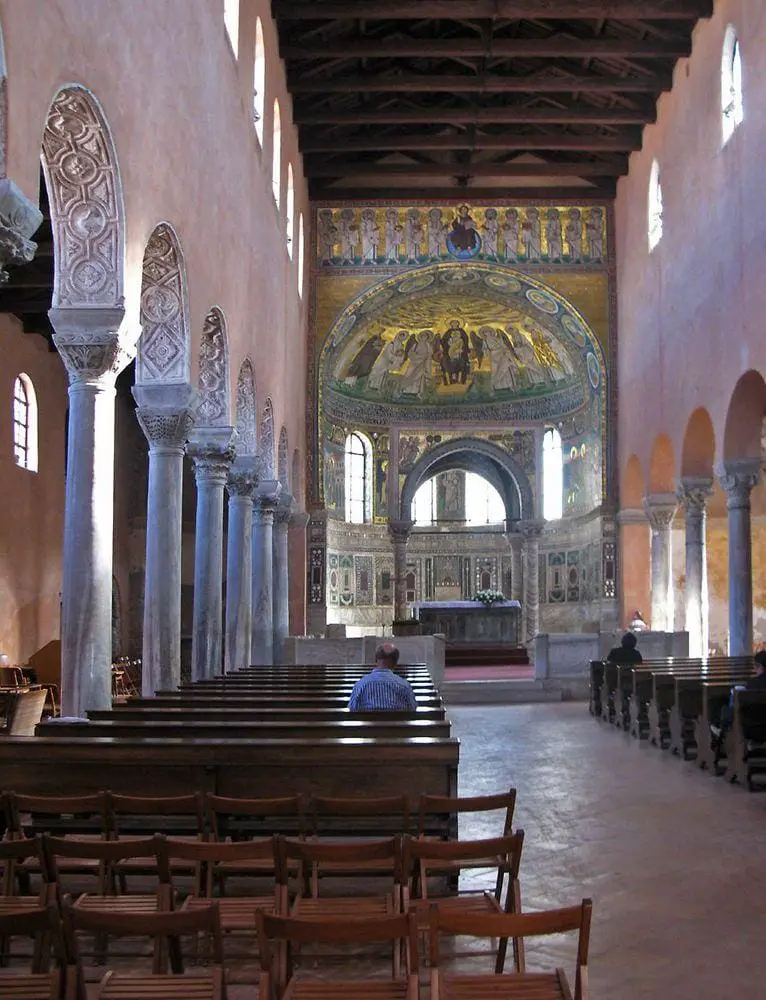
Ston and Mali Ston with fortifications of Pelješac peninsula
Dubrovnik-Neretva
Unique monument of medieval urban planning. Two medieval villages on both sides of the Pelješac peninsula are connected by an ancient fortification wall. A defensive wall was erected by the Ragusa Republic in thirty years time after 1358, mainly for the protection of the valuable Ston salt pans. After the completion of the wall at both ends of it were built two small fortified towns – Ston and Mali Ston. These villages housed the guards of the wall. Length of walls – 5.5 km, they are protected by 40 towers and 5 forts.
Historical center of Trogir
Split-Dalmatia
Ancient Greek colony, established in the 3rd c. BC, in Roman times, turned into a major port. The ancient city was ruined by Saracens in 1123, and in medieval times it became an important trade port again. Nowadays the old city (located on a fortified island) contains one of the richest collections of Romanesque and Gothic architecture in this region. Street networks were inherited from the times of the Greek colony.
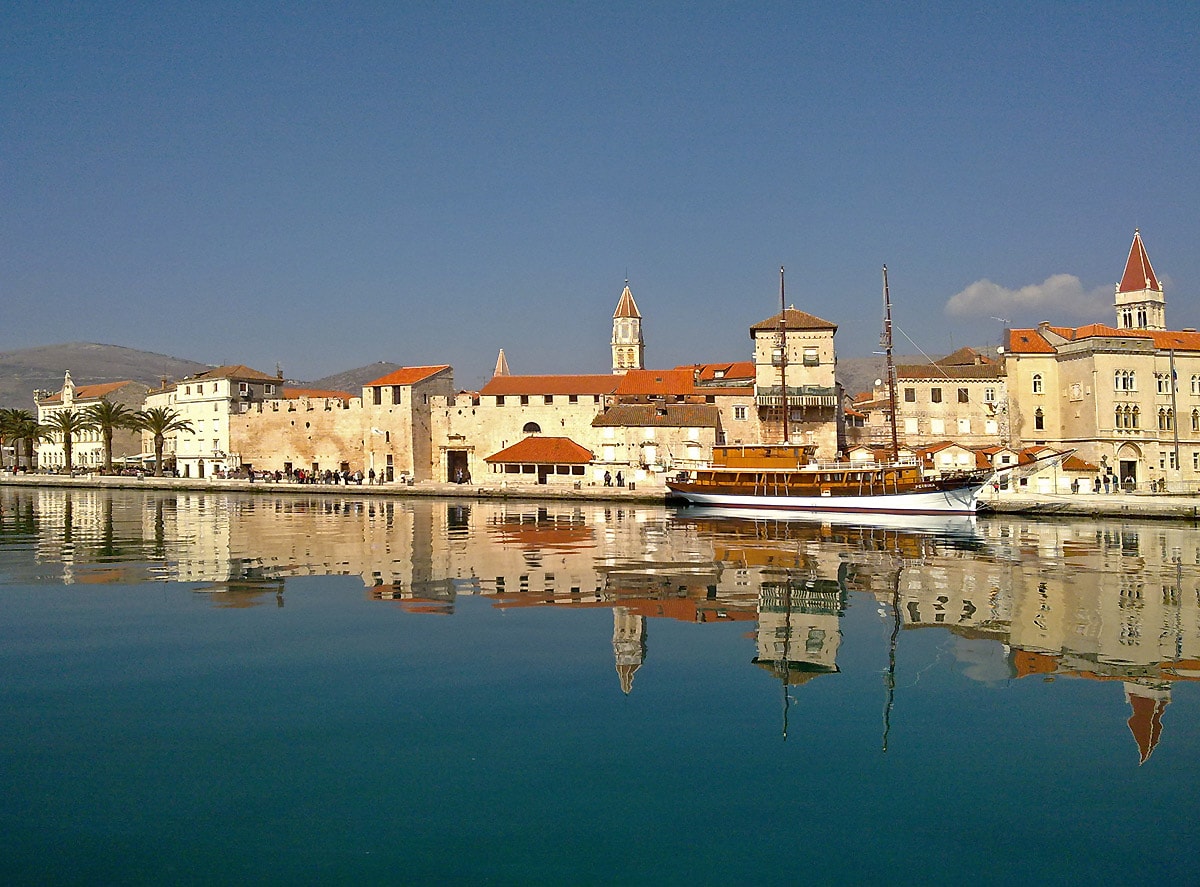
Historical center of Split and Palace of Diocletian
Split-Dalmatia
Approximately 1,700 years old Dalmatian city. The core consists of the best-preserved imperial residence of Ancient Rome which was built by retired emperor Diocletian in AD 293-305. This unique urban monument consists of a palace, Mausoleum, Temple of Jupiter, gates, and other structures. The planning of Split since then has followed this Roman pattern.
Zagreb Cathedral
City of Zagreb
Beautiful, white Gothic cathedral, the tallest building in Croatia (108 m). Construction started in 1093, the first church was destroyed in 1242 and rebuilt in Gothic style.
Dubrovnik Synagogue
Dubrovnik-Neretva
The oldest Sefardic synagogue in use in the world, and the second oldest synagogue in Europe. Established in 1352, still serves for worship.
Historical city of Motovun
Istria
A small medieval town on the site of a prehistoric hillfort. The town is located on a hilltop and overlooks the Istrian peninsula. Preserved medieval walls, many valuable Romanesque-Gothic buildings, and unusual city planning.
Zmajeva špilja (Drakonjina špilja)
Split-Dalmatia
A natural cave, the hermitage of Glagolitic monks from the 15th century. The cave is adorned with unusual carvings of mythical beings including a dragon, as well as ancient cult symbols. Site of legends about werewolves and witches.
Trogir Cathedral of St.Lawrence
Split-Dalmatia
An exceptional building built in Romanesque-Gothic style and later styles in the 1213 – the 1600s. Archaic interior. Church has a beautiful Romanesque portal made by sculptor Radovan.
Historical center of Zadar
Zadar
An ancient seaside city with an urban structure and remnants of buildings (impressive Roman forum) from Roman times. Fortified in the times of the Venetian republic, rich with beautiful Gothic and Renaissance architecture.
Medieval center of Varaždin and Varaždin castle
Varaždin
Possibly the most impressive medieval city in continental Croatia. The city together with the fortress in the middle of it was developed in the early 13th century. Capital of Croatia in the 18th century. Varaždin castle belongs to the most impressive ones in Croatia.
Trakošćan Castle
Varaždin
Beautiful, large castle, initially built in the 13th century, rebuilt in the 19th century in Romantic style.
Visovac Monastery
Šibenik-Knin
Catholic monastery built on an island in Visovac lake. Established in the 14th century, new buildings built in the 18th century. Contains many valuable items like incunabuna of Aesop’s fables from 1487.
Historical center of Korčula
Dubrovnik-Neretva
Beautiful walled Dalmatian medieval city covering a small sea island divided from the mainland by a row. Street planning in herringbone form. Built mainly in the 16th century. Includes valuable Romanesque-Gothic Cathedral of St. Mark (1301-1806) and beautiful Franciscan monastery from the 15th century and many more valuable buildings.
Historical center of Poreč
Istria
A historical seaside city located on a picturesque peninsula with numerous buildings in Venetian Renaissance style. The street network of the old town has been inherited since Roman times.
Stari Grad Plain
Split-Dalmatia
Hvar island for the most part consists of limestone cliffs and Stari Grad Plain here is an untypical fertile area. Since the early 4th century BC nearly intact here has been preserved the ancient Greek agricultural landscape with division into parcels (chora) by stone walls and ancient paths. This picturesque agricultural landscape still is used as 2,500 years ago.
Šibenik James Cathedral (Katedrala Sv. Jakova)
Šibenik-Knin
A beautiful Renaissance cathedral that was built in 1402 – 1555 without mortar, using joints and stocks made in stone.
Velki Tábor castle (Veliki Tabor)
Krapina-Zagorje
Well preserved, impressive castle from the 12th – 16th century AD. Arcade in the inner yard in Renaissance style.
 Recommended books
Recommended books
A Traveller’s History of Croatia
Anyone who has glimpsed the long, mountainous, island-studded Dalmatian coast would surely agree that its beauty is a little short of divine. Croatia, quite simply, is blessed with some of the most spectacular scenery on the planet, and its history is equally captivating. A Traveller’s History of Croatia offers tourists and travelers an inside look at how the country’s cultural fusion of Mediterranean, Central European, and Balkan influences has given it a tumultuous past.
The Rough Guide to Croatia
The Rough Guide to Croatia is the ultimate travel guide to one of Mediterranean Europe’s most beautiful and unspoiled countries. With over a thousand islands, clear blue waters, inland waterfalls, stylish cities, Roman remains and medieval towns, Croatia packs a punch far above its size.


